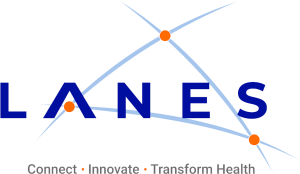The original article can be found it Health Data Management
For more than 10 years, the Healthcare Executive Group has annually queried its members to see what’s keeping them awake at night. The effort has provided insight into primary opportunities, challenges and issues currently facing healthcare executives. The rankings for this year also include where these particular issues were listed in the previous two years, indicating some of the movement of concern in recent years. The HCEG Top Ten is based on member input gathered during the months leading up to its Annual Forum. Then, top concerns are ranked during several iterations of voting during the forum. The HCEG Top 10 also provides the framework for an annual research survey, The Industry Pulse, which is developed in partnership with Change Healthcare. That survey then is used to gather additional, more detailed information on the opportunities, priorities and challenges faced by health plans and health systems.
Data And Analytics
HCEG members see continued importance in leveraging data (especially clinical information) to manage health and drive individual, provider and payer decisions. Respondents are seeing progress in how primary sources of clinical data and analytics have recently been affecting the efficiency and effectiveness of healthcare quality and outcomes.
- 2018 rank: 1
- 2017 rank: 3
Total Consumer Health
There’s growing awareness that improving members’ overall medical, social, financial and environmental well being is rising in importance. The Industry Pulse Report shows the tools and services healthcare organizations are using to enhance member and patient engagement, and the best approaches for addressing passive patients, such as incentives, health literacy and cost transparency tools.
- 2018 rank: 5
- 2017 rank: 2
Population Health Services
Healthcare organizations are seeking to operationalize a community-based health strategy, involving chronic care management, driving clinical integration and addressing barriers to health, such as social determinants. The industry is transitioning from broad medical condition segments of the population to looking at what is called “barriers to better health.” However, challenges are expected in integrating SDoH into population and clinical care programs.
- 2018 rank: 2
- 2017 rank: Not ranked
Value-Based Payments
Healthcare organizations see urgency in transitioning to and targeting specific medical conditions to manage cost and improve quality of care. Payment reform or value-based payments has been on the Top 10 list every year for the last decade. Some 63.6 percent of respondents included in the Industry Pulse Report expect it will be three years or more before payments contain both upside and downside risk.
- 2018 rank: 3
- 2017 rank: 1
The Digital Healthcare Organization
Called by many other terms, this involves facilitating interactions with consumers, with varied approaches such as HSAs, portals, patient literacy, cost transparency, digital payments, CRM, wearables and other patient-generated data, health monitoring, and omni-channel access and distribution.
- 2018 rank: 10
- 2017 rank: Not ranked
Rising Pharmacy Costs
Implementing strategies to address the growth of pharmaceutical costs along with benefits to quality of care and to total healthcare costs.
- 2018 rank: 9
- 2017 rank: 7
External Market Disruption
New worries for existing traditional healthcare organizations include an influx of new players like Amazon, Chase, Apple, Walmart and Google. External market disruption entered the HCEG Top 10 list for the first time—and the Industry Pulse Report by Change Healthcare notes that 32 percent of respondents anticipating the greatest impact to be “disrupting current business models.”
- 2018 rank: Not ranked
- 2017 rank: Not ranked
Operational Effectiveness
As pressure grows to become more efficient, healthcare organizations are increasingly implementing lean quality programs and undertaking process efficiency (with new core business models), robotics automation, revenue cycle management, real-time/near-time point of sales transactions and more.
- 2018 rank: Not ranked
- 2017 rank: Not ranked
Opioid Management
Healthcare organizations are developing strategies for identifying and supporting individuals and populations struggling with substance abuse and addiction, or who are at risk of addiction.
- 2018 rank: Not ranked
- 2017 rank: Not ranked
Cybersecurity
The pressure continues for healthcare organizations to protect the privacy and security of consumer information to maintain consumer trust in sharing data. However, there’s growing concern that efforts to address cybersecurity threats may be stalling, and year-over-year comparisons suggest that the number of patient records that have fallen into the hands of hackers has increased dramatically.
- 2018 rank: 6
- 2017 rank: 4
